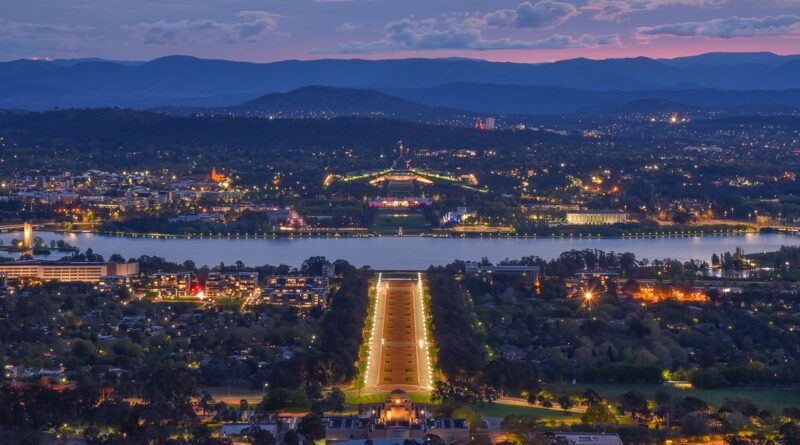View from The Hill: Albanese’s 43% emissions reduction target by 2030 has some political cover
Labor’s “Powering Australia” climate policy, released on Friday, is carefully calibrated to the politics.
Anthony Albanese described it as “modest”, declaring “we do not pretend that it is a radical policy”. It is indeed risk averse.
Labor has learned heaps from its 2019 climate policy problems which caused it so much grief, just when the issue should have been favourable ground for it.
For one thing, don’t be over-ambitious. For another, have answers, in the form of modelling. Don’t say costs can’t be estimated.
Debate has raged within Labor about where to set the crucial medium term target. The attention internationally is now on 2030, not 2050.
An ultra cautious option would have been to just accept the government’s projection of a 35% cut on 2005 levels and turn that into a firm target. But that wouldn’t wash, given Labor has always elevated climate change as an issue.
The choice of a 43% target – compared to 45% in 2019 – is one that differentiates the opposition from the government, but still provides Labor with cover.
State governments and business have embraced targets that are more or equally ambitious. This makes it much harder for Labor’s opponents to easily demonise its policy.
Albanese promises a Labor government would take the 43% target to next year’s international climate conference, where nations have been asked to put forward new ambitions. He wraps this with some tinsel by saying Australia would seek to host the COP conference in 2023, perhaps in conjunction with Pacific countries, for which climate is a major issue.
Labor’s policy has strong economic, regional and consumer focuses. It’s pitched to appeal in terms of jobs and cost of living, rather than primarily to environmental arguments.
It estimates 64,000 direct jobs and 540,000 indirect jobs would be created by 2030. Job creation would be heavily skewed to regional areas: Labor said five out of six of the new jobs would be in the regions.
Household power bills would be lowered – the modelling estimates by $275 in 2025 and $378 in 2030.
Obviously such estimates should be read with some scepticism – modelling all depends on the assumptions and the real world can change very quickly.
The share of renewables in the national electricity market by 2030 would be 82%, the policy says.
Importantly, to achieve more robust emission reductions, Labor would use the Coalition government’s Safeguard Mechanism, adopting a Business Council of Australia recommendation to, in effect, give it teeth to bring down the emissions of the companies that are big emitters.
Leaving aside the government’s attack, the sharpest criticisms of the policy will come from the left and green groups. The immediate business reaction was benign.
This will suit Albanese just fine. He emphasised Labor wants to work with business on climate policy.
The BCA described the policy as a “sensible and workable plan”. The Australian Chamber of Commerce and Industry said it offered a “pathway to achieve the economic and technological transition towards a more sustainable future”.
But Greenpeace said the policy was a missed opportunity. Greens leader Adam Bandt said: “Labor now joins the Liberals with targets that have given up on the science, given up on Glasgow and given up on climate.
“Labor’s backdown shows the only way we’ll get climate action is kicking the Liberals out and putting Greens in balance of power to push Labor to go further and faster.”
The risk, which Labor has decided to take, is that a middle of the road policy gives the Greens the chance to pick up votes. Albanese’s calculation is that the battle for votes is in the centre.
But the Bandt line about the Greens’ ambition to assert pressure on a Labor government is one that Scott Morrison will run hard with.
Energy expert Tony Wood, from the Grattan Institute, says the choice of the 43% target of “is a sound next step as it gets Australia on track towards net zero emissions by 2050”.
But Wood says there remain a lot of questions despite the detail that’s been given.
He says the policy, having ruled out targeting transport as too politically fraught and agriculture as just too hard, homes in on electricity and industrial emissions, although results there are not easy to achieve.
“The policy announcement rests heavily on economic analysis done by Reputex. It is unclear what drives the additional investment in renewables.
“The claimed additional emissions reduction in the electricity sector and the claimed savings to consumers are hard to verify and seem to depend on government largesse,” he says.
“And, the assumption that this would occur without accelerating the closure of existing coal-fired generators is inconsistent with the government’s projections and likely to prove optimistic.
“Using the government’s own Safeguard Mechanism to impose an obligation on large emitters is a sound concept. Again, the details of how the changes would work in practice to deliver the claimed reductions and at what cost, are hard to identify without further analysis”, Wood says.
On early indications the government will have substantially more trouble scoring hits against this policy than it did against Labor’s 2019 one.
Unsurprisingly, energy minister Angus Taylor immediately went back to mining familiar ground.
“At the heart of today’s announcement is a sneaky new carbon tax on agriculture, mining and transport,” he said (he’d earlier road-tested the line when the BCA produced its policy). “A future Labor government will legislate to force the nation’s 215 largest industrial facilities to reduce their emissions by five million tonnes each year (to zero by 2050).”
The “sneaky carbon tax” is an easy line. But it does have the ring of returning to old campaigns to fight a new one.
![]()
Michelle Grattan does not work for, consult, own shares in or receive funding from any company or organisation that would benefit from this article, and has disclosed no relevant affiliations beyond their academic appointment.

